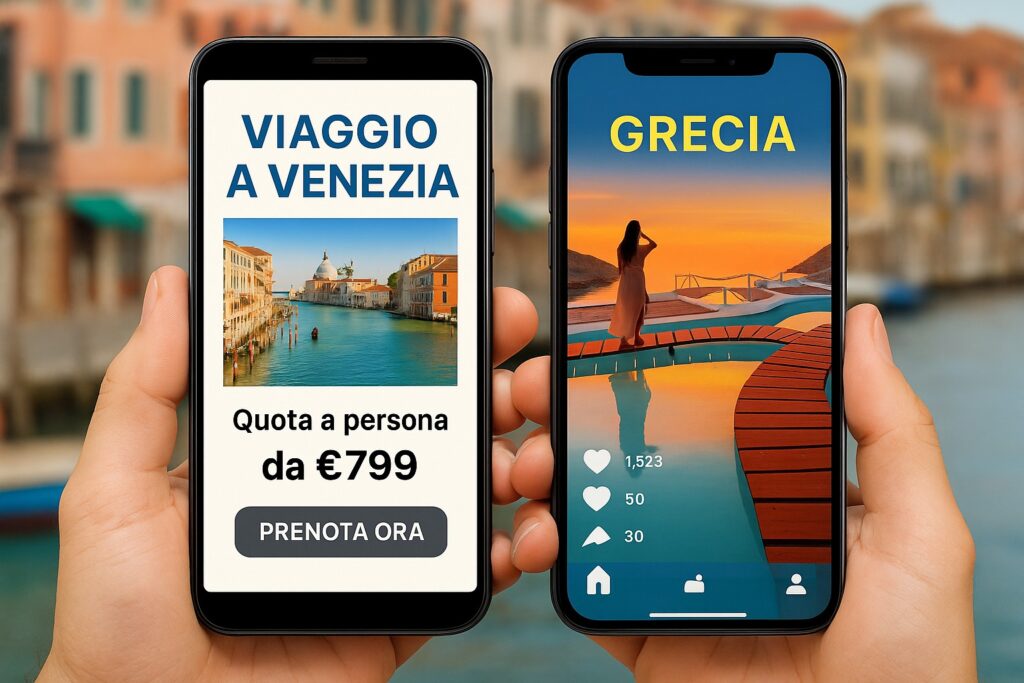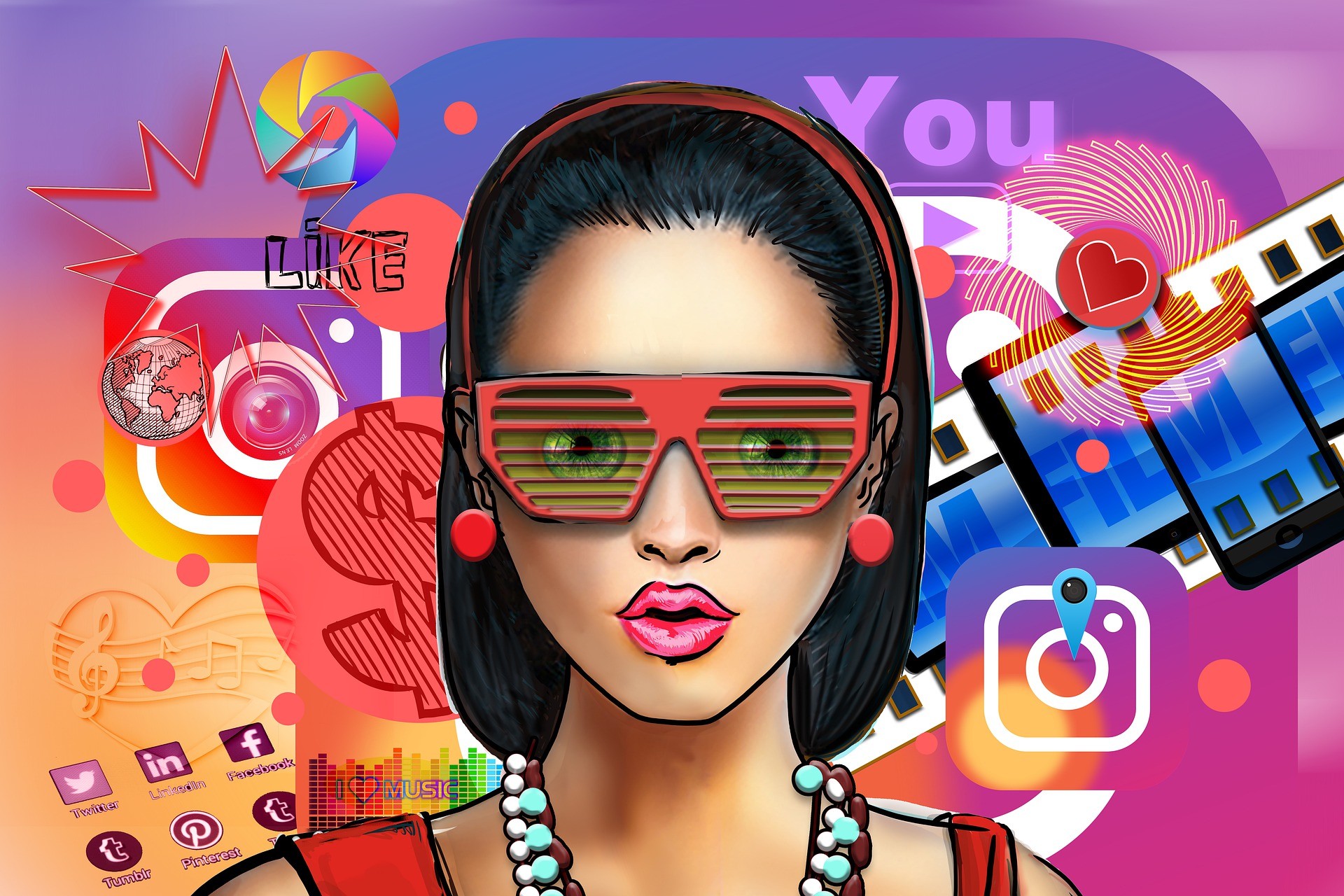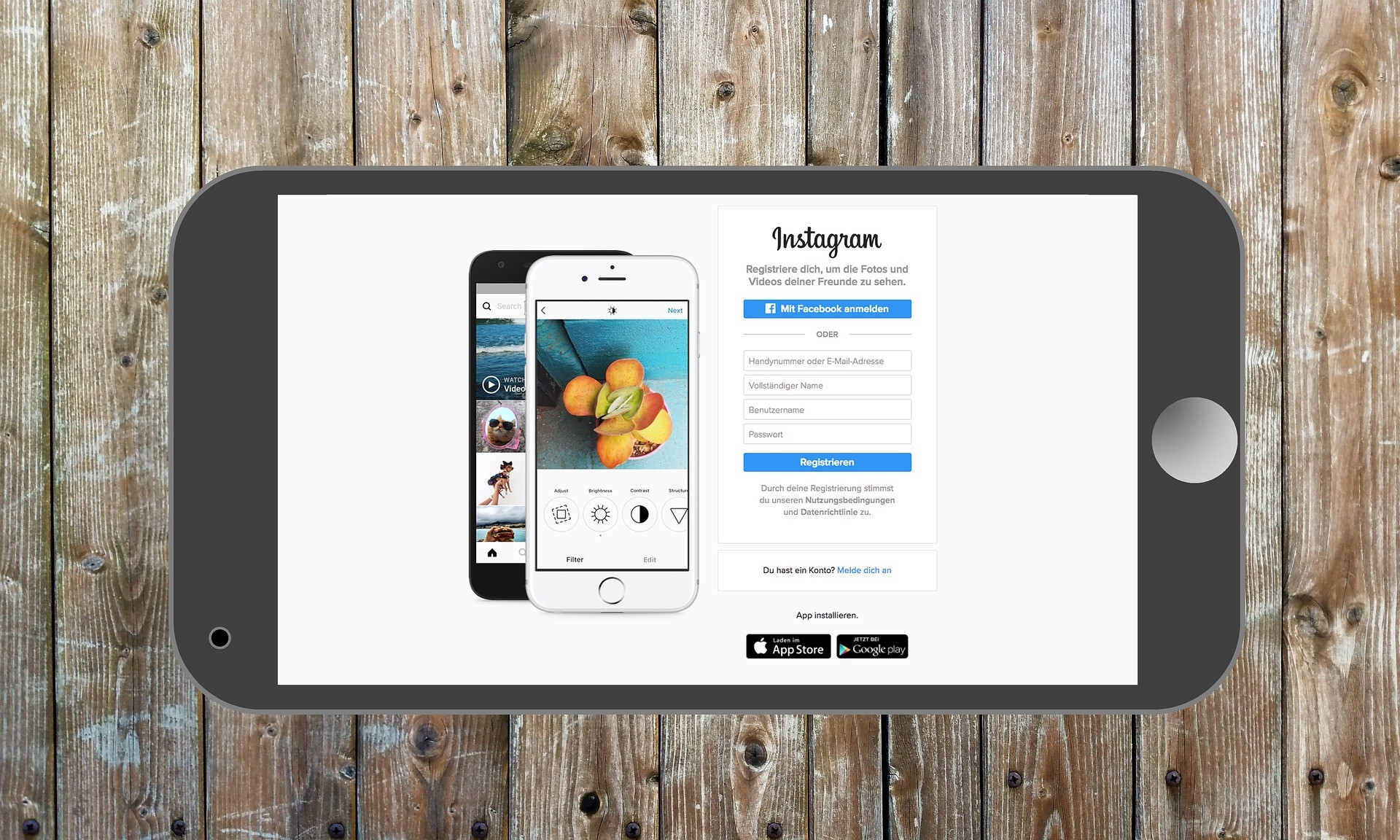It's not social media's fault
Over the past few years I have often heard the same phrase: “We started Instagram, but it doesn't bring in customers”. Or: “TikTok is only for kids, it doesn't work for selling travel.”. And again: “The website is useless, everyone looks at social media anyway.”.
Summary
The truth is something else: Social media and websites work very well, even in tourism. But they don't work if they are managed badlyThe problem isn't the tools, but who manages them. Too many travel agencies (and too many "pseudo social media managers") treat digital as a simple transposition of offline. The result? Online showcases that don't build trust, fail to attract new customers, and end up alienating even those who might be interested.
The wrong model: the online flyer
Imagine a classic travel agency. In the window, colorful posters displaying beach deals, organized tours, and New Year's Eve packages. Prices, dates, and contact information are prominently displayed.
Does it work? Yes, if the goal is to attract passers-by.
Now we're moving the same model to social media: posts with graphics full of text, packages starting at €599, countdowns for limited places. Or websites full of pages with standard offers and price lists.
Does it work? No.
Users don't come to Instagram or TikTok to browse catalogs. On Google, they don't search for "7-night Maldives tour package," but for questions like "when to go to the Maldives," "what to see in Malé," or "which atolls to choose."
This is why digital flyers don't work. They don't capture user intent, they don't create desire, they don't build trust.
Why this approach loses customers
Social media is a platform for entertainment and discovery, not a shelf of offers. Websites are content hubs, not price list boards. If a travel agency only publishes flyers online, it's sending three implicit messages:
- It has no content to tell → therefore it has no added value.
- It all comes down to price → and someone else always wins on the price.
- He doesn't know the rules of digital → and therefore appears less professional.
Today's customer is much more informed than yesterday. If they're looking for inspiration, they go to Instagram or TikTok. If they're looking for practical answers, they go to Google. If they only find digital flyers, they scroll past and look elsewhere. The damage isn't just "not selling": the damage is burn credibilityAnd in tourism, trust is the most valuable currency.
The false myth of the “social media manager”
Agencies often hire a "social media manager" thinking that this will solve the problem. But having someone who posts isn't enough if the content It's wrong. A self-employed social media manager who only creates graphics with prices isn't strategizing; he simply pushes the flyer online. It's like having a graphic designer who changes the posters in your shop window every week.
The result?
- Monotonous feed, without storytelling.
- No organic growth.
- No brand positioning.
A true digital marketing professional doesn't just fill spaces: he builds content, positioning and relationship strategies.
What a travel agency really needs
To stand out online, an agency doesn't have to "be there", it has to be there wellHere's what makes the difference:
- Emotional storytelling → tell experiences, not just packages.
- Evergreen content → practical guides, columns, and advice that remain valid over time.
- Serial formats → recognizable columns that create anticipation and loyalty.
- SEO and AEO → sites optimized for Google and conversational search engines, which intercept real questions.
- Cross-channel consistency → website and social media that speak the same language.
Real-world examples: what not to do and what to do
- What not to do: post the offer “7 nights in Sharm for €899” on Instagram.
What to do: reel with “3 unmissable experiences in Sharm” article “What to see in Sharm el-Sheikh” on the site. - What not to do: Fill the site with 50 copy-and-paste packages from tour operators.
What to do: original guides enriched with authentic advice, videos and FAQs. - What not to do: Use only stock graphics with logos and prices.
What to do: alternate emotional images, testimonies and behind the scenes.
The value of professionalism
A makeshift website or social media profile isn't just useless: it's harmful. It conveys a lack of seriousness, lowers brand awareness, and suggests the agency isn't up to date. A professionally curated website or social media profile, on the other hand:
- positions the agency as authoritative;
- distinguishes it from its competitors;
- builds trust even before direct contact.
My experience
In my work I often encounter two types of reality:
- those who have stopped at the digital flyer model and are struggling to attract customers;
- those who have invested in a digital strategy and are now reaping results in terms of visibility and demand.
It's not a question of luck, but of method. And method is built on skills, experience, and a long-term vision.
Bottom line: Stop wasting time with online flyers.
The problem isn't social media, the website, or digital. The problem is how you use them. If you turn social media into a showcase for offers, not only won't you sell, but you'll lose credibility. If you build valuable content with the help of professionals, social media and your website become your most powerful channels.
If you are a travel agency and really want to make the leap, book a Free consultation With me. Because social media isn't about displaying prices: it's about building trust, desire, and customers.
FAQ
Why don't travel agency social media work?
Because they are often used as showcases for offers, rather than as tools for inspiration and engagement with travellers.
Is it worth posting offers on social media?
Not alone: an offer without emotional context doesn't generate interest. It's better to complement it with storytelling, guides, and valuable content.
What should a travel agency website be like?
An effective website should offer guides, advice, and helpful content, not just copy-and-paste packages from tour operators.
Is a social media manager enough to grow an agency?
Only if you work strategically. Simply creating digital flyers isn't marketing, it's just filler.











